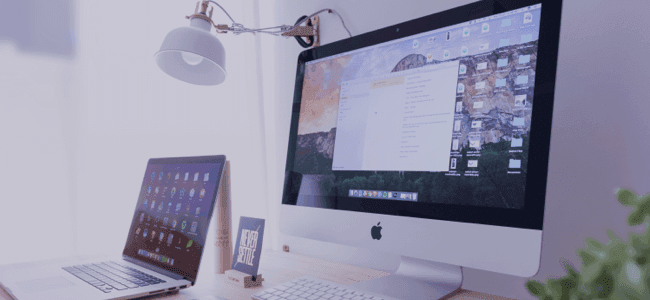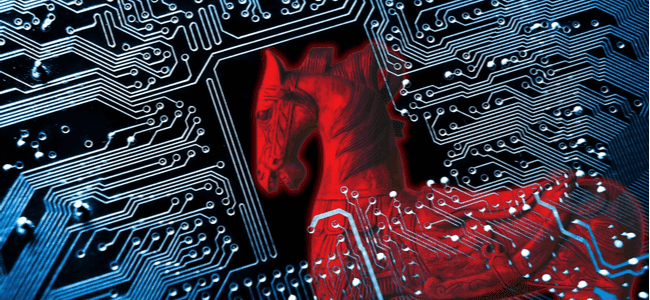The Security Threat Of Deepfake

The term ‘deepfake' generally refers to fake videos or even audio recordings that look realistic. At this point, anyone with internet access can download software and create fake videos or photos that look more than convincing.
This technology is very easily accessible, but at the same time, can be extremely threatening to people's identities.
In tandem with the rise of artificial intelligence, creating deepfake content has become easier than ever. Read on to understand what this is and how it poses a major threat to individuals and businesses.
What Is Deepfake?
Deepfake technology facilitates the creation of very convincing videos, photos, and audios from scratch by manipulating existing media sources. The most common type of this content out there has to do with putting celebrities' faces on the bodies of adult movie stars and making videos of famous politicians saying things that make no sense.
However, it is totally possible to even create a video depicting a false emergency alert or warning about an imminent attack or even to create personal videos that could spoil relations. It is also equally possible to develop content of politicians that could depict a false election campaign.
A little knowledge of how this kind of software works can equip you with the ability to make fake videos that look super realistic. These techniques can easily be mastered and do not require any specific skills. All you need is deepfake software and a number of videos or photos to manipulate.
How Does It Work?
Believing what we are seeing is a widespread human trait. We always tend to get visual when we consider the things we believe. This trait can be used against people by making malicious videos and photos.
We come across these cases of disinformation and fake news very often, and most of these are attributed to this technology in some way or another. Fact-checkers might indeed come to the rescue, but by that time, it usually is too late. Most people are inclined to believe what they see, and only a very small percentage of people will do a thorough fact-check of sources.
Deepfake content aims to exploit people's visual connectivity for false propaganda by using "Generative Adversarial Networks." The technology involves two machine learning models that carry out the process. The first Machine Learning model will be trained on a set of data to create video forgeries.
The second ML model will detect signs of such forgeries. The first model makes sure to re-iterate the process until the second one cannot detect any anomalies in the forgery involved. When the data training set is vast, the process of forging becomes a lot easier and extremely effective. This way, the generated deepfake will turn out to be very believable.
How Can It Be Detected?
Detecting deepfake content isn’t very easy. Those that are created by amateur creators can be exceptions, but most look so realistic that the naked eye will not be able to point out the difference. One common way to detect this malicious content is to look out for anomalies in the shadows.
In most fraudulent videos, the shadows look weird, and people's eye-blinking actions might look off.
Detection can be hard as these GANs possess the ability to train themselves to evade all these signs and make the videos look as lifelike as possible. However, you can always look into small factors like distortions, noise, and other anomalies to identify a deepfake.
Having such technology around has led us to a point where we cannot trust anything we hear or see online. Since the internet mediates much of our lives, as of today, it is essential to always watch out for fraudulent content.
How Deepfake Is A Threat To Our Digital Identity
Deepfake technology can be used in many manipulative ways to change the idea of reality. Attackers can create fake negative videos of influential politicians, business people, celebrities, and other influential people and distort their image in the eyes of ordinary people. This manipulation of reality could lead to real personal and political issues.
As this technology is on its way to maturity, the concern behind it has escalated to a higher level. In some cases, this technology can be implemented to create false digital identities and even documents.
As Deepfake is becoming a "mainstream" concept, anybody's and everybody's digital identity is at stake.
All that aside, many researchers are in the process of developing better ways to detect such distorted media that are found all over the web. This has led to the concept of a "digital fingerprint" that can be used to identify a person's digital identity uniquely.
Bottom Line
In combating such fraudulent content, it is essential that the creators of such malicious software are never underestimated. More 'digital fingerprints' have to be implemented in the best possible manner by incorporating innovative ideas.
Biometric technologies can be a part of the preventative measures taken against these types of content.
Biometric signatures will help us to implement unique digital identities. Implementing this technology in all digital logins and other areas is a reliable measure against the threat to digital identities.
Accordingly organizations and governments are embracing these ideas to cut down on the obvious risks.




